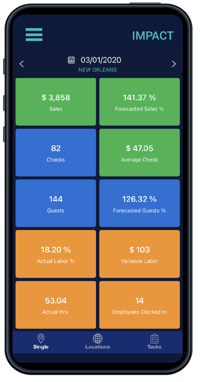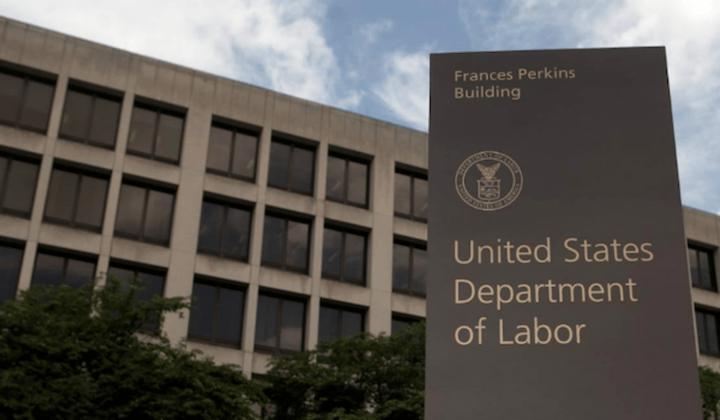
- Home
- Crunchtime Blog
- 6 Scheduling Pitfalls Restaurants Should Avoid in 2024

6 Scheduling Pitfalls Restaurants Should Avoid in 2024
Review this list to make sure your restaurant avoids these common scheduling mistakes in the new year.
Creating the optimal staff schedule can be a tricky task, even for the most seasoned restaurant manager. Position your operation for success this year by avoiding the pitfalls that can block your restaurant from optimized labor management.
1. "Guesstimating" Staffing Needs
Many managers still rely on the age-old practice of “guesstimating” to create work schedules. This approach uses intuition or an educated guess to predict how busy the restaurant will be.
But the stark reality is that guesswork doesn’t always lead to optimally staffed shifts. In fact, bad guesswork can lead to a host of problems that harm a restaurant's efficiency and bottom line. If the manager overestimates demand, they will end up with too many employees on the shift, which cuts into profit margins. If the manager underestimates demand, they might end up short-staffed, resulting in frustrated customers with long wait times, lower-quality service, and stressed-out employees.
Many restaurants are struggling today to accurately forecast their labor needs. A recent study showed that restaurants are not properly staffed for 38% of shifts in a given week. This includes shifts being under- or over-staffed.
If guesstimating isn't working, what can restaurant managers do to predict the optimal number of employees for each shift?
Modern restaurant scheduling software can alleviate the burden of manually forecasting labor needs. Advanced forecasting algorithms can analyze your historical sales and accurately predict how busy your restaurant will be. The forecast should factor in numerous inputs, and it can also be customized. Even the most experienced restaurant manager would struggle to manually calculate all of the different factors and inputs that a forecasting algorithm would handle.
Once you know your expected sales, a scheduling platform can recommend exactly who to staff during each hour of the day to get full shift coverage and maintain your profit margins. With a modern forecasting solution, you can say goodbye to guesswork, and rest assured you’ll have the right number of staff during peak hours and slow hours.
2. No strategy for labor law compliance
Foregoing a strategy for compliance is like playing with fire. Every restaurant operating in the United States must adhere to labor laws like The Fair Labor Standards Act (FLSA), while other labor laws, like Fair Workweek, vary by jurisdiction. But make no mistake, failure to comply with labor laws can be costly.
These consequences not only impact your finances but can also tarnish your company's reputation. Restaurants without a labor law compliance strategy are at a substantial risk of making mistakes. If you track compliance with a manual method like spreadsheets, you're putting your business at risk of human error.
Investing in your compliance strategy is a smart decision for both risk mitigation and better operations. A modern scheduling platform can automate the complexities of compliance and give you peace of mind that every store manager is positioned for success.
Set up your configurable labor rules to align with the laws of each store location and once the labor rules are in place, scheduling guard rails will prevent the manager from creating a schedule that violates the local laws.
For instance, if you try to schedule a minor for too many hours, a notification will instantly alert you. Or, if you schedule an employee for over 40 hours in a week, you'll get an alert about overtime pay. For laws like Fair Workweek, the system will immediately alert you if you have violated a predictive scheduling regulation.
Staying compliant is an organization-wide effort and worthwhile investment. As you move into 2024, remember that compliance isn’t just about avoiding penalties—it's also about fostering a workplace culture of fairness and upholding the rights of employees.
3. Manually tracking shift changes and requests
Restaurant managers are busy. They don’t have time to manually manage an ongoing list of requests and changes to the schedule. For this reason, some restaurants have even banned schedule changes altogether, but that isn’t the best long-term solution.
Employees today greatly value schedule flexibility and they want to maintain a healthy work-life balance. Managers should know that changes to the schedule are always a possibility—team members will inevitably call out sick, or have outside obligations from time to time.
If you manually keep track of these requests by email, text, or spreadsheets, don't expect to get the full shift coverage you need. Requests can easily slip through the cracks, leading to a communication breakdown and disgruntled employees.
Restaurants can be prepared to handle changes and requests by using an employee-facing mobile scheduling app. This will provide your team with an easy way to post available shifts and swap shifts. Your employees should also be able to submit time off requests and list their availability directly in the mobile app.
A restaurant scheduling app can greatly simplify the scheduling process for both managers and the entire crew. Everyone will be happier and more productive at work, with properly covered shifts and flexible schedules.
4. Paying unnecessary overtime
Overtime expenses can quickly drain your budget. While paying overtime might be necessary at times, it can also be a simple oversight that inflates your labor costs.
Restaurants can prevent payroll surprises by using scheduling software that focuses on labor costs and your budget. When a manager is building the schedule, they should be immediately notified if a shift exceeds 40 hours per week.
By flagging potential overtime situations, the manager can proactively adjust the schedule to ensure that labor costs stay within the budget. Crunchtime takes this one step further by providing a mobile app that will alert managers on the store floor when an employee is about to go into overtime. Proactive labor management is the key to growing your restaurant brand, but without the right tools, it can be challenging to manage your workforce efficiently.
Controlling costs may feel overwhelming, but you can start by paying closer attention to your payroll and noting where overtime is occurring—is it avoidable or was it necessary at the time? Note areas for improvement and start with small operational changes that can have a big impact.
5. Not monitoring your labor costs during the shift
Labor accounts for approximately one-third of a restaurant's costs. Whether you're a store manager overseeing daily operations, or part of the corporate team, keeping a vigilant watch on labor costs is key.
Stores should always be focused on staffing shifts to meet demand. If you are consistently staffing more team members than necessary, you will likely have bloated labor costs.
Your restaurant manager should have easy access to their labor costs and sales. Whether it's on the dashboard or on a mobile device, accessible data is key to a profitable operation. After all, you can't manage what you don't have visibility into.
At Crunchtime, we understand the importance of data, which is why we provide managers with labor metrics right on their phone with the Impact mobile app. Users can also opt-in to receive a daily email report of the previous day’s labor costs so they can constantly stay informed.
As you head into 2024, consider making an effort to prioritize your labor data and use the insights to optimize your workforce during every shift.
Pictured right: Crunchtime's mobile app Impact.
6. Not tracking your actual hours vs. earned hours
Managers often need to adjust staffing levels according to the day's sales. If sales are lower than expected, the manager may need to send some staff home early. But managing labor costs in the moment isn't always easy.
With the Actual vs. Earned Hours Report, management can evaluate how well stores have been responding to sales activity. “Earned Hours" indicate how many hours your employees should have clocked in order to meet sales demand that day. This number is system-generated and represents what the perfect staffing level should have been during the shift.
The "Actual Hours" represents the number of hours your team worked in real life. The goal is to get the variance between these numbers close to zero. If the variance is too high or too low, it is likely that there is a problem that requires fixing. It could mean managers aren’t reacting enough to sales and adjusting the staff level as needed.
An experienced supervisor can coach the restaurant managers and teach them how to be more responsive to the restaurant's conditions. If you don't currently track your actual vs. earned hours, consider adding this report to your storehouse of actionable information.
Final Thoughts
Today, restaurants need to be smart. Labor is expensive and any manager can create a schedule—the real challenge is creating quality schedules that make the most efficient use of your available resources, while staying within your labor budget. Crunchtime can help you address the common scheduling pitfalls listed above, as well as the biggest labor management challenges facing your restaurant.
Ready to learn more?
Let's get the conversation started. Request a demo to see how Crunchtime’s restaurant scheduling software can help you optimize your labor and schedule smarter.
Share this post
Related


Got Earned Hours? How to Measure Your Shift Scheduling Effectiveness



